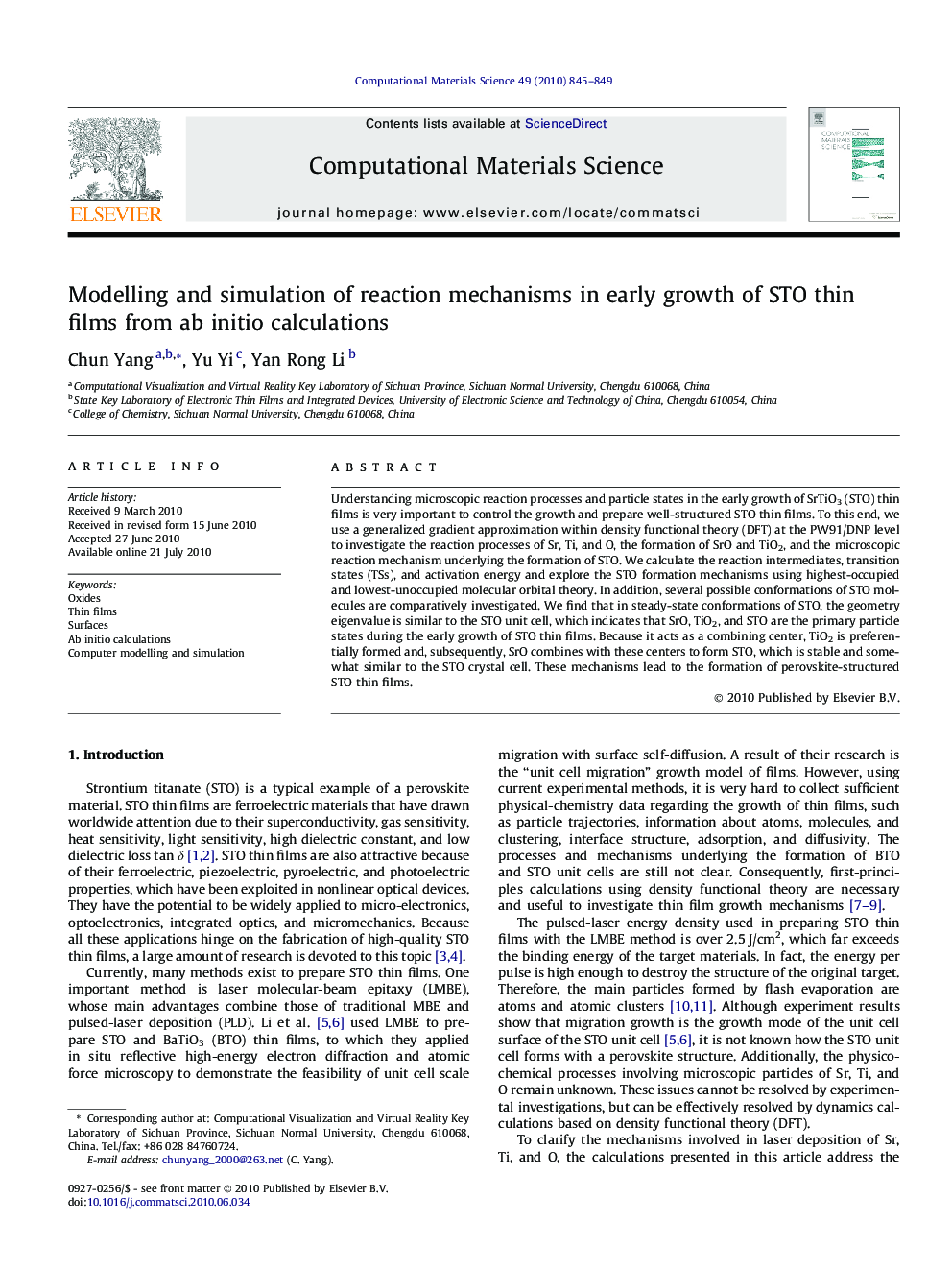| Article ID | Journal | Published Year | Pages | File Type |
|---|---|---|---|---|
| 1562306 | Computational Materials Science | 2010 | 5 Pages |
Understanding microscopic reaction processes and particle states in the early growth of SrTiO3 (STO) thin films is very important to control the growth and prepare well-structured STO thin films. To this end, we use a generalized gradient approximation within density functional theory (DFT) at the PW91/DNP level to investigate the reaction processes of Sr, Ti, and O, the formation of SrO and TiO2, and the microscopic reaction mechanism underlying the formation of STO. We calculate the reaction intermediates, transition states (TSs), and activation energy and explore the STO formation mechanisms using highest-occupied and lowest-unoccupied molecular orbital theory. In addition, several possible conformations of STO molecules are comparatively investigated. We find that in steady-state conformations of STO, the geometry eigenvalue is similar to the STO unit cell, which indicates that SrO, TiO2, and STO are the primary particle states during the early growth of STO thin films. Because it acts as a combining center, TiO2 is preferentially formed and, subsequently, SrO combines with these centers to form STO, which is stable and somewhat similar to the STO crystal cell. These mechanisms lead to the formation of perovskite-structured STO thin films.
